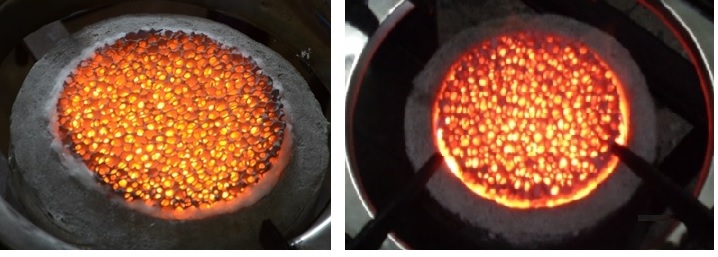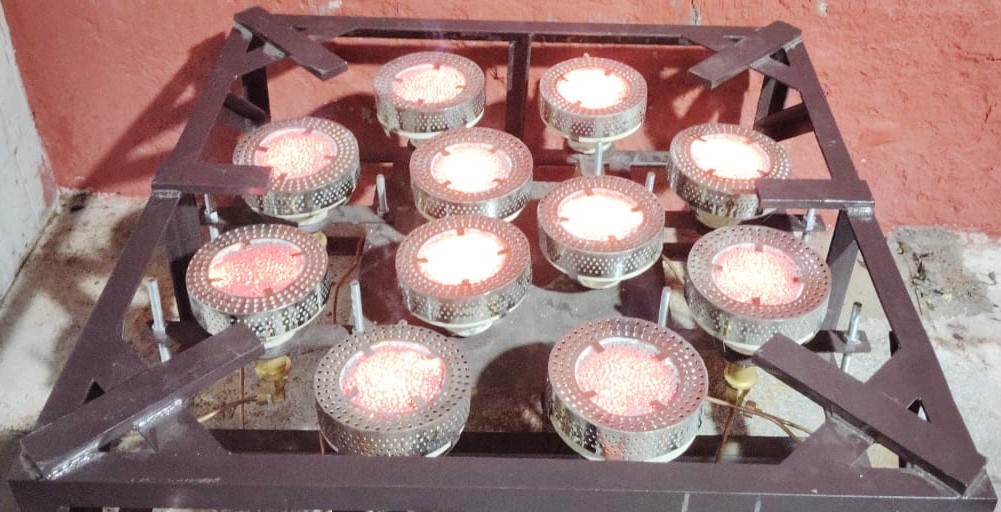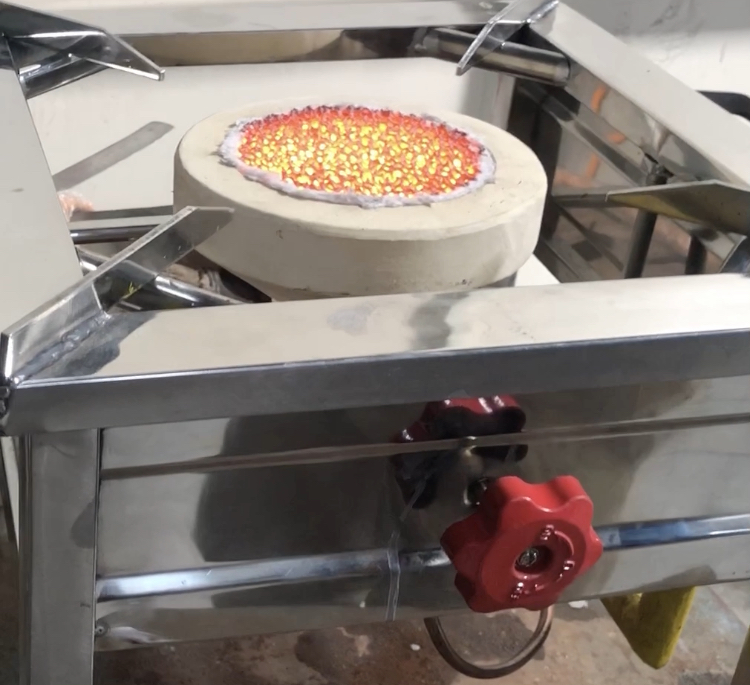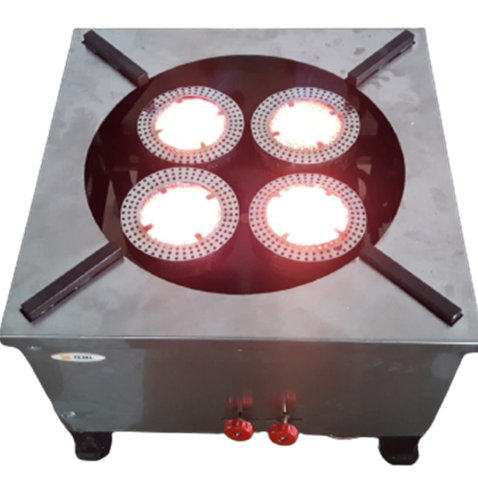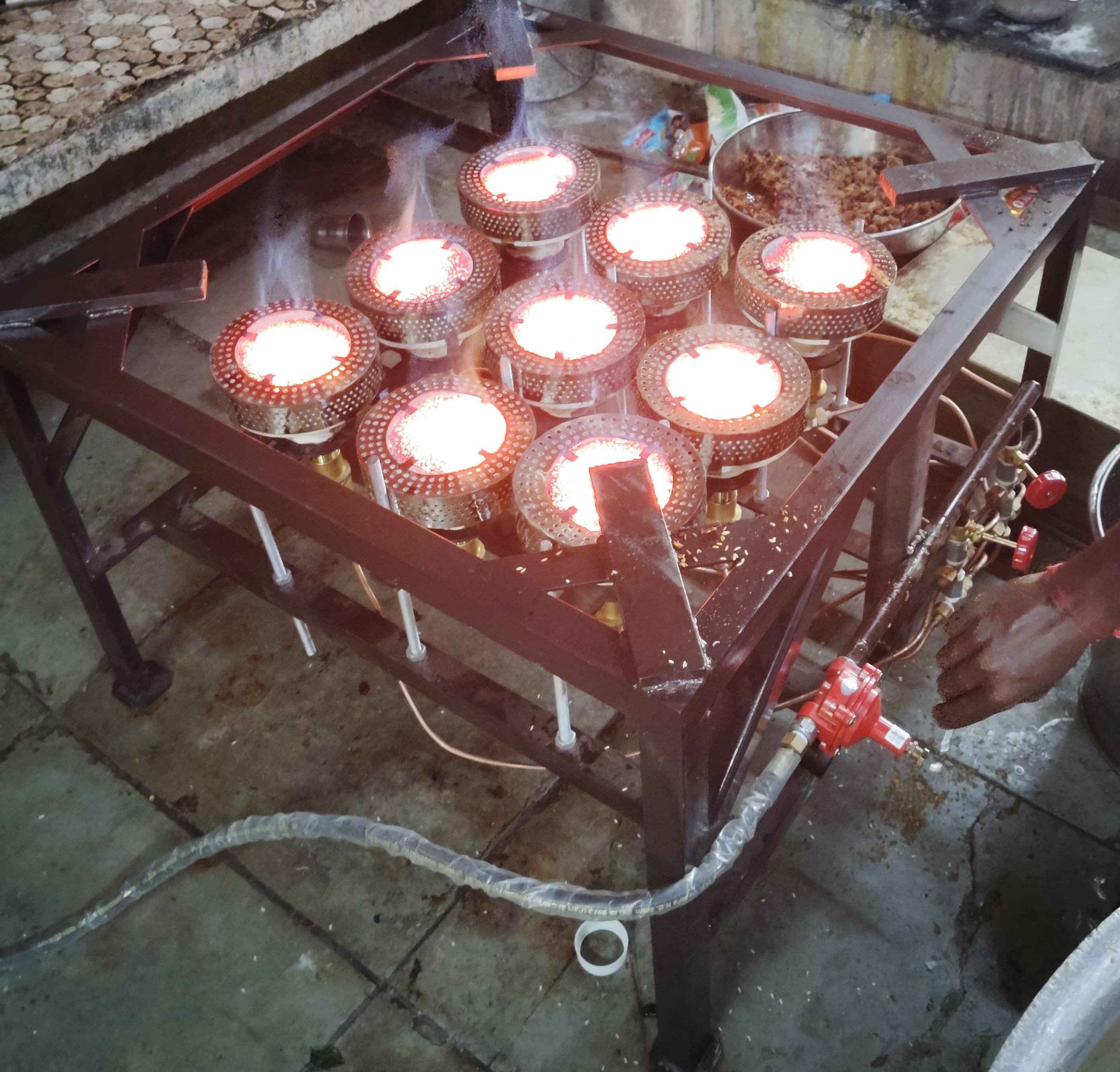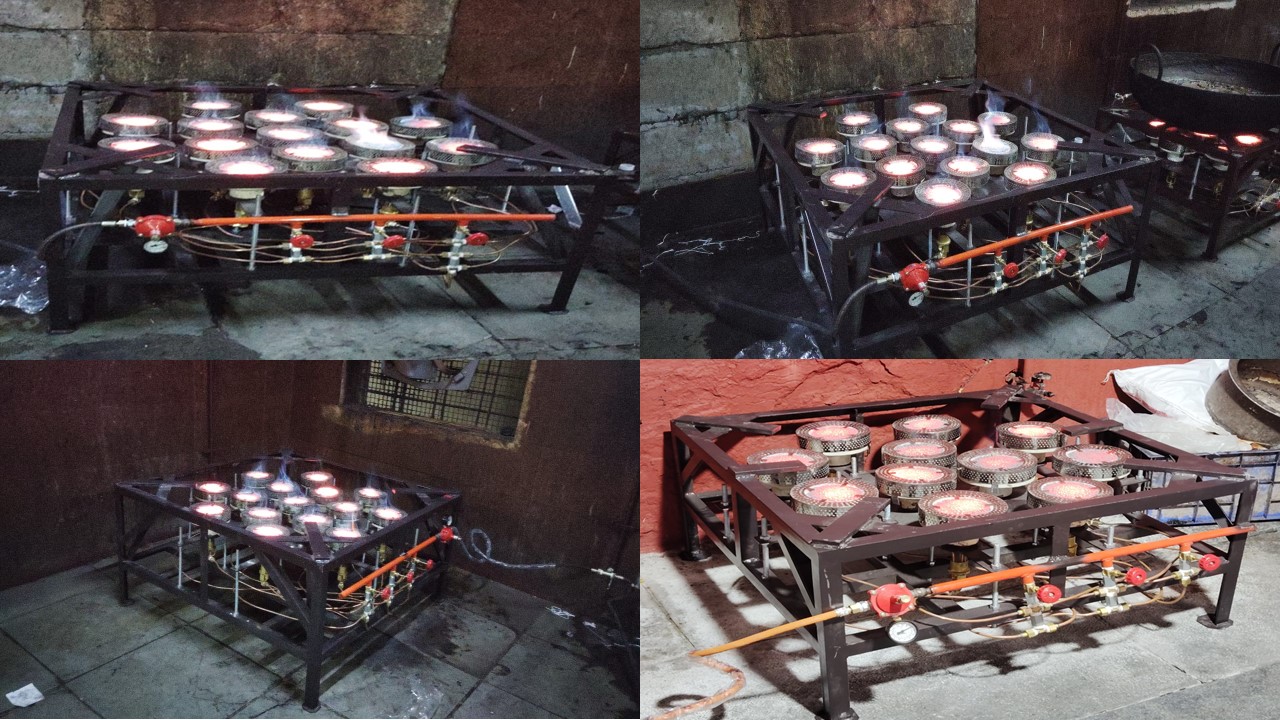Combustion Lab
Cookstoves with Porous Radiant Burner (PRB) for Domestic and Commercial Applications
In an effort to improve the performance of liquid and gas-based combustion devices, Porous Media Combustion (PMC) has emerged as a potential solution in recent years. Unlike conventional combustion devices, where combustion occurs entirely in the gaseous environment, PMC uses porous media to enhance combustion. Depending on the situation, combustion in PMC can occur entirely inside or on the surface of the porous matrix. A larger surface area-to-volume ratio increases heat transfer by convection, while the highly conductive and radiative porous matrix further enhances heat transfer through conduction and radiation. In Free Flame Combustion (FFC), where gases have low thermal conductivity and emissivity, heat transfer is primarily by convection. In contrast, all three modes of heat transfer—convection, conduction, and radiation—are significant in PMC. Thus, PMC results in better combustion, improved thermal efficiency, and lower emissions. Additionally, PMC enables the combustion of low-calorific-value fuels.
Utilizing the concept of Porous Media Combustion, Prof. Muthukumar’s research group at IIT Tirupati has developed stoves with Porous Radiant Burners (PRB) for LPG, biogas, and kerosene fuels. Their work has resulted in fuel savings of approximately 30–45% and an 85% reduction in CO and NOx emissions compared to conventional counterparts available in the market. These prototypes have been tested under various operating conditions, with no safety concerns reported.
Furthermore, Prof. Muthukumar’s research team has developed PRBs with capacities ranging from 2 kW to 65 kW for commercial cooking and industrial applications. These prototypes have been successfully installed in various educational institutions and government organizations, with reported fuel savings of up to 50% in actual working conditions.
As part of several ongoing projects, PRB-based medical waste incinerators, industrial furnaces, ceramic drying systems, and more are being developed. Additionally, the team has drafted and published BIS standards for ethanol and methanol cook stoves in collaboration with NITI Aayog and BIS.
Features of Porous Radiant Burners (PRB)
- PRB provides fuel saving up to 50%
- Shorter payback period of around 2-3 months.
- Ideally suited for all gaseous and liquid fuels including, LPG, CNG, PNG, Biogas.
- Reduce up to 80 % emissions, providing better working environment.
- Extends average life span of the cooks by 2-3 years.
- No soot formation.
- Lower environment mitigation index (6-10 times)
Real Time Fuel Saving of Porous Radiant Burner (PRB)
|
Cook-Stove Type
|
Eqv.CB Stove (η)
|
PRB Stove (η)
|
Fuel Saving
|
|
PRB-135
|
38 – 45%
|
61 - 65%
|
35 - 40%
|
|
PRB - 115
|
60 – 65%
|
75 – 78%
|
30 - 35%
|
|
PRB - 135 (Biogas)
|
43 – 48%
|
54 – 60%
|
22 - 30%
|
|
PRB - 205
|
38 – 45%
|
60 - 65%
|
35 - 40%
|
|
Cluster PRB - 135
|
35 - 42%
|
55 - 61%
|
38 - 45%
|
|
PRB-Kadai - 5 to 13
|
25 - 35%
|
50 - 58%
|
50 - 60%
|
